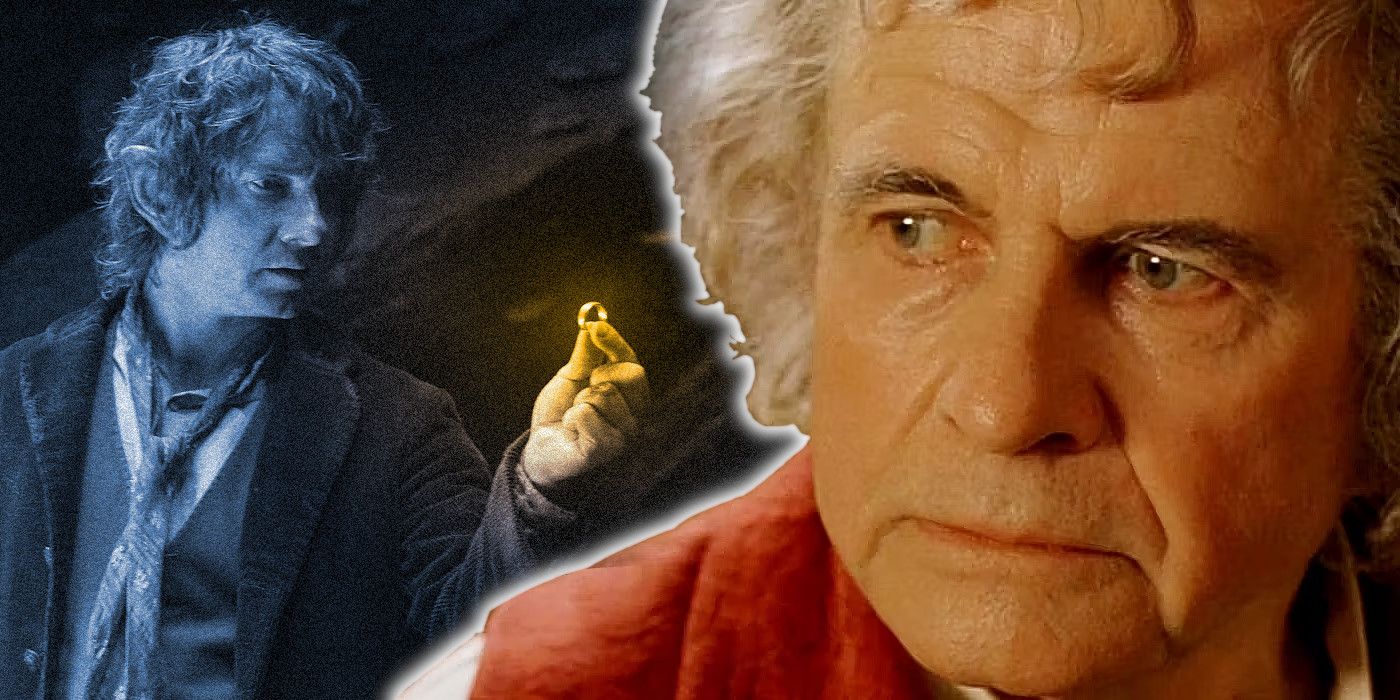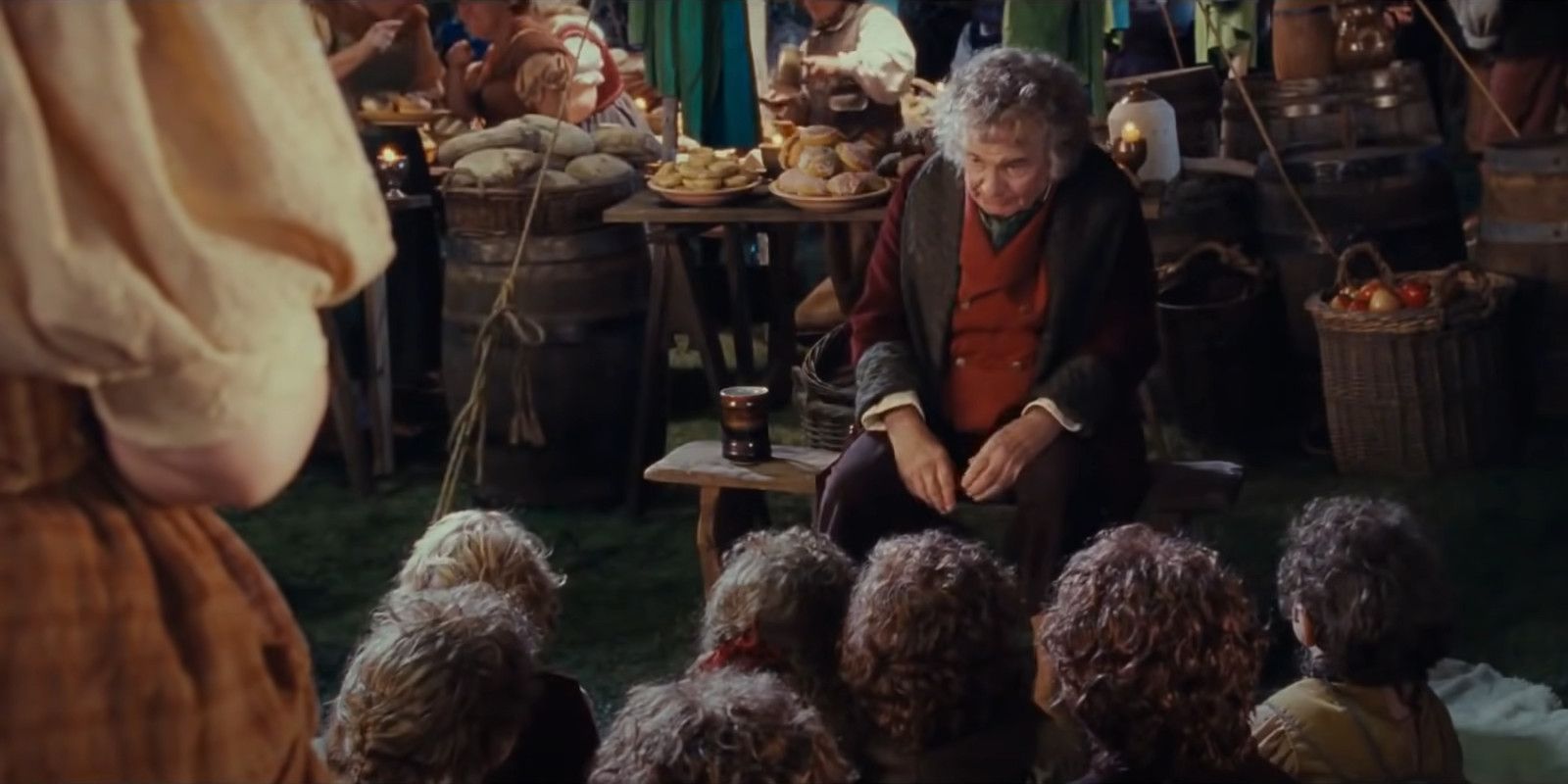
The Lord of the Rings had a grander scope and more serious tone than The Hobbit, which was first and foremost a children’s story. There were also some discrepancies between the lore of the two novels, the most significant of which surrounded the nature of the One Ring. Tolkien could have simply ignored such inconsistencies and written off aspects of The Hobbit as non-canon, but his perfectionism would not allow that. Instead, he devised an in-universe explanation for the major changes that The Lord of the Rings made to his lore. He did so by turning Bilbo Baggins, the hero of The Hobbit, into a liar.
The Lord of the Rings Made the One Ring Far More Significant
Editions of The Hobbit and The Lord of the Rings Published in Tolkien’s Lifetime
Publication Date
The Hobbit, First Edition
1937
The Hobbit, Second Edition
1951
The Lord of the Rings, First Edition
1954-1955
The Hobbit, Third Edition
1966
The Lord of the Rings, Second Edition
1966
In the first edition of The Hobbit, the One Ring was nothing more than a magical trinket that granted Bilbo the power of invisibility. It had no official name, and Tolkien did not refer to it as a Ring of Power. In the chapter “Riddles in the Dark,” he wrote, “Gollum had had a ring — a wonderful, beautiful ring, a ring that he had been given for a birthday present, ages, and ages before in the old days when such rings were less uncommon.” Gollum offered it to Bilbo as a prize for winning their game of riddles, not knowing Bilbo had already found it and stored it in his pocket. Gollum was upset when he realized that he had lost the One Ring, but mainly because he was unable to give it to Bilbo as promised. Bilbo told Gollum that he could make up for losing it by showing him the way out of the cave, and Gollum peacefully obliged.
Aside from helping Bilbo escape a few sticky situations, the One Ring was relatively unimportant to the rest of the story. In The Lord of the Rings, that could not have been further from the truth. Tolkien revealed that the One Ring was an artifact of immense magical power, and the entire plot revolved around destroying it in the fires of Mount Doom before it could return to the Dark Lord Sauron. The One Ring corrupted the minds of those who possessed it, twisting their greatest desires into evil actions. In The Lord of the Rings, Gollum is defined by his obsession with the One Ring. It transformed him from a hobbit into a hideous creature, and his attempts to reclaim it from Frodo ultimately spelled his doom. This version of Gollum would never have given the One Ring away, which was the main conundrum that Tolkien needed to solve.
The One Ring Corrupted Bilbo in The Hobbit
In the first edition of The Hobbit, Thrain, Thrór, and Azog were unnamed.
In this edition, Tolkien also referred to certain Elves as gnomes.
In an extremely minor change, Tolkien’s revised edition of The Hobbit replaced Gandalf’s request for tomatoes with a request for pickles.
In later editions of The Hobbit, Tolkien rewrote “Riddles in the Dark” to fall in line with the One Ring’s lore from The Lord of the Rings. The new description referred to it as a Ring of Power and emphasized its rarity. Gollum still claimed that it was a birthday present, but the narration indicated that he was lying. Gollum did not offer the One Ring as a prize, instead agreeing from the start to show Bilbo the exit if he won the game of riddles. Gollum became crazed and furious when he could not find the One Ring, and he attacked Bilbo, correctly guessing that he had stolen it. Bilbo needed to turn invisible to evade Gollum and sneakily follow him out of the cave. Peter Jackson‘s The Hobbit: An Unexpected Journey is based on Bilbo’s encounter with Gollum in this updated version of the story.
As Tolkien revealed in the prologue of The Lord of the Rings novel, neither edition of The Hobbit was non-canon. The narrative from the first edition was the story that Bilbo told to Gandalf and Thorin‘s Company. He later wrote it down in the Red Book of Westmarch, the in-universe source of The Hobbit and The Lord of the Rings. The revised edition was the truth, based on notes that Frodo and Sam wrote after their adventure. Bilbo’s theft and dishonesty cast him in a negative light, but it was not entirely his fault; the One Ring had already wormed its way into his mind, tempting him to conceal the truth. That said, lying was not out of character for Bilbo. He used deception often throughout The Hobbit, such as during his encounters with the trolls and with Smaug or when he hid from Thorin that he had taken the Arkenstone. His very role in Thorin’s Company was that of a burglar, which required a level of deceit.
Good Storytelling Mattered Most to Bilbo in The Lord of the Rings

In the first edition, Gollum called himself “precious,” but he did not refer to the One Ring as such.
The first edition referred to Gollum as “squeaking,” which Tolkien removed in his revision.
Strangely, Tolkien did not capitalize the term “Ring of Power” in The Hobbit as he did in The Lord of the Rings.
Bilbo’s unreliability as a narrator could explain some less important discrepancies between The Hobbit and The Lord of the Rings as well. The former included creatures that Tolkien never mentioned again in his legendarium, such as the stone giants who lived in the Misty Mountains. Additionally, the trolls and goblins in The Hobbit were much goofier than their counterparts from The Lord of the Rings. The novel also had a clear-cut happy ending like something out of a fairy tale, ignoring the War of the Ring that would occur less than a century later. Tolkien did not directly state that these were fabrications, but if Bilbo was willing to lie about something as important as the One Ring, he easily could have stretched the truth in other places to make his story happier or more exciting.
Bilbo omitted, added, and exaggerated many aspects of his adventure. Jackson’s An Unexpected Journey hinted at this with a quote that Gandalf told Bilbo towards the start of the film: “Well, all good stories deserve embellishment.” Like Tolkien, Bilbo seemingly intended his book to be read by children; Jackson’s The Lord of the Rings: The Fellowship of the Ring even showed him recounting the tale of the trolls to some young hobbits at his birthday party. Fans of The Lord of the Rings can attribute the stranger and sillier aspects of The Hobbit to Bilbo taking some artistic liberties for the sake of his readers. The revisions in later editions of The Hobbit were fascinating because they showed that Tolkien’s concept of Middle-earth was ever-changing. Even the words he put on the page were not set in stone.





